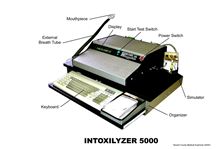Minnesota Intoxilyzer Source Code Litigation
On June 27, 2012, the Minnesota Supreme Court released its long-awaited decision regarding the validity of the Intoxilyzer 5000EN breath machine, used in thousands of Minnesota DWI cases. By a 4-3 margin, the Supreme Court upheld the validity and reliability of the Intoxilyzer 5000EN machine. A copy of the decision is available here.
The decision ends an approximately six-year battle regarding access to, and analysis of, the Intoxilyzer’s source code, which governs the machine’s operation. Despite known errors in the source code, the Minnesota Supreme Court ruled that these errors do not affect the reliability of the test results. Thus, more than 4,000 DWI cases returned to district court for resolution or trial.
To read more details about the Supreme Court’s decision, please visit our blog post here.
History of Intoxilyzer Litigation
In 2006, defense lawyers began requesting access to the source code of the Intoxilyzer 5000EN breath machine used in Minnesota. The source code refers to the computer code governing the breath machine’s operation and accuracy. Defense lawyers argued that analysis of the source code was necessary to determine if the Intoxilyzer was reporting accurate results. After years of contentious litigation, defense lawyers finally obtained access to the Intoxilyzer’s source code in 2009, pursuant to a settlement in federal court.
After obtaining access to the source code in 2009, defense lawyers formed a Source Code Coalition of lawyers to organize and fund the expensive task of reviewing the source code and litigating the matter in district court. Jay Carey joined the Coalition in 2009, and has challenged the Intoxilyzer’s source code in hundreds of individual cases. Collectively, the Coalition’s lawyers have raised this issue in thousands of cases statewide.
Soon after its formation, the Coalition requested that all pending and future source code cases be consolidated into one proceeding to decide the issue for all litigants. In January 2010, the Minnesota Supreme Court granted the request for consolidation and appointed Judge Jerome B. Abrams to administer, hear, and decide all pretrial challenges to the Intoxilyzer’s source code in pending criminal cases and civil license revocation cases.
During late 2009 and into 2010, the Coalition retained experts to conduct a thorough review of the Intoxilyzer’s source code. In December 2010, the Coalition presented its evidence and arguments to Judge Abrams during approximately two weeks of evidentiary hearings. On March 8, 2011, Judge Abrams issued his final decision in a 122-page order and memorandum. Judge Abrams ruled that the Intoxilyzer’s source code is reliable with respect to determining alcohol concentrations, and therefore, the Intoxilyzer test results are admissible at trial. However, Judge Abrams ruled that the source code is unreliable in certain test refusal cases, where the machine erroneously deems a valid breath sample “deficient,” and the person is charged unfairly with test refusal. To read all of Judge Abrams’ rulings, see the Minnesota Court site regarding the Statewide Source Code Litigation.
On March 28, 2011, the Coalition filed an appeal of Judge Abrams’ ruling with the Minnesota Court of Appeals. Due to the thousands of cases affected statewide, the State’s lawyers petitioned the Minnesota Supreme Court for accelerated review of the appeal, meaning that the State sought to bypass review by the Minnesota Court of Appeals and submit the appeal directly to the Minnesota Supreme Court. On June 28, 2011, the Minnesota Supreme Court granted accelerated review of the appeal. Between August and October 2011, the Coalition and State’s lawyers filed their appellate briefs with the Supreme Court. Oral arguments before the Justices of the Supreme Court occurred on December 1, 2011. You can watch a recording of the oral arguments at the Minnesota Supreme Court site. Following oral arguments, the appeal was submitted in its entirety to the Supreme Court.
In 2011, the State began phasing out the use of the Intoxilyzer 5000EN in DWI cases and replacing it with a new breath machine called the DataMaster DMT, which is a much more modern and hopefully accurate breath testing instrument. By mid 2012, most police agencies in Minnesota switched to use of the DataMaster DMT test for DWI enforcement. In 2013, the the Intoxilyzer 5000EN was phased out completely, and now police agencies use the DataMaster DMT exclusively.
During the pendency of the litigation, many police agencies stopped using the Intoxilyzer 5000EN altogether. In lieu of breath testing, these agencies offered drivers blood and urine tests to determine alcohol concentrations. Prior to this litigation, police agencies rarely offered blood or urine tests to people arrested for DWI.
In general, police agencies much prefer breath testing because the test results are available immediately, and the police agencies can issue orders revoking driving privileges and impounding license plates, effective seven days after arrest. With blood and urine testing, driver’s license revocation and plate impoundment are delayed substantially because the test results are not available immediately. In fact, it takes the State’s crime labs two weeks or more to analyze blood and urine samples and report the results to the Safety (DPS). After receipt of the test results, the DPS then mails the driver notice of license revocation and plate impoundment (as applicable), which typically occurs 3 to 8 weeks after the DWI arrest. Thus, blood and urine testing is much less efficient than breath testing.



